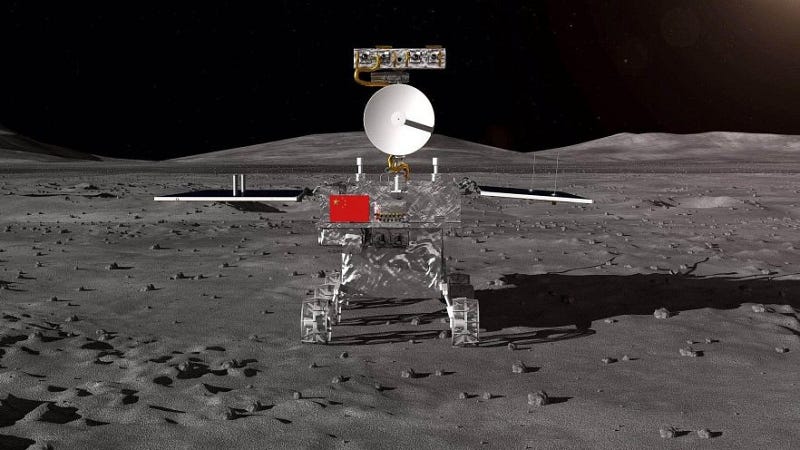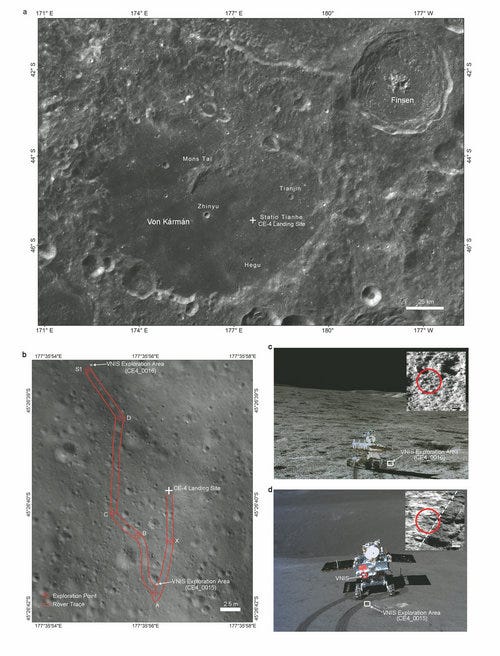China's Ambitious Lunar Exploration Plans: A New Era in Space
Written on
Chapter 1: Milestones in Lunar Exploration
As the world marked the 50th anniversary of the Apollo 11 mission, the China National Space Administration (CNSA) achieved a significant milestone of its own. A recent study on the China Lunar Exploration Program (CLEP) highlighted the progress made in space exploration since 2007, offering an encouraging assessment of China's endeavors.
This comprehensive review, published in the journal Science, indicates that China’s 30-year strategy for lunar exploration is on track to potentially position the country as a leader in the field.

The Yutu-2 rover, the first robotic explorer of its kind on the Moon's far side, made history when it accompanied the Chang’E-4 lander, which successfully touched down on January 3, 2019. This groundbreaking mission provided detailed 3D maps of the Moon and uncovered mantle material beneath the lunar crust. Such discoveries may shed light on historical impacts from celestial bodies.
“Fifty years after Neil Armstrong took, ‘one small step for man, one giant leap for mankind,’ China’s CE-4 lander and Yutu 2 rover marked humanity’s inaugural robotic visit to the far side of the Moon,” stated Li Chunlai, Deputy Director-General at the National Astronomical Observatories of the Chinese Academy of Sciences (NAOC).

Chapter 2: Lessons from the Tiangong-2 Mission
On July 19, the CNSA experienced the controlled re-entry of the Tiangong-2 space station, which had been in orbit since its launch in 2016. The spacecraft, measuring just 10.4 meters (34 feet) in length and 3.35 meters (11 feet) in width, was designed to accommodate two taikonauts.
Engineers had anticipated the mission would last around two years, but it ultimately exceeded expectations, lasting over 1,000 days in space. Most of the spacecraft was incinerated upon re-entry, with debris landing harmlessly in the South Pacific Ocean.

Chapter 3: Future Plans for Lunar Exploration
The Tiangong-2 mission was instrumental in preparing for a larger space station, set to launch its first module, Tianhe-1, in 2020. The roadmap for China's lunar ambitions, outlined in the CLEP since 2007, includes a series of missions aimed at exploring the Moon.
Following earlier missions in 2007 and 2010, which orbited the Moon, and the successful landing and operation of a rover in 2013, the Chang’E 5 mission is slated for a 2020 launch. This mission aims to gather samples from the Moon's surface, marking the first lunar sample-return mission since 1976.
Future missions, Chang’E 6 and 7, will investigate the lunar south pole, focusing on resource identification and environmental studies.
“Chang’e 7 aims to conduct detailed surveys of the Moon's south polar region, focusing on its geological features and water ice locations,” NASA reports.
This first video titled "CHINA Kick Out US from the Moon: What Next?" delves into the implications of China’s lunar missions and their impact on international space relations.
The second video, "Watch: China Launches Mission to 'Hidden Side' of the Moon | WSJ News," highlights the launch and objectives of China's Chang’E missions.
Chapter 4: The Vision for a Lunar Scientific Research Station
China envisions establishing a Lunar Scientific Research Station, which may eventually accommodate human visitors. This facility will likely be situated near the Moon's south pole, where water ice has been discovered within permanently shadowed craters.
“Li and his team are optimistic that these developments will lead to significant advancements in science through a Lunar Scientific Research Station. The aim is to have this station operational by 2030, allowing for technical verification and scientific experiments, ultimately supporting long-term human presence on the Moon,” stated the Chinese Academy of Sciences.
The presence of water at the south pole not only makes it an appealing target for exploration but also provides crucial resources for future missions. Water can be converted into hydrogen and oxygen, potentially serving as fuel and breathable air for lunar travelers.
China seeks collaboration with other nations to promote scientific advancements and explore the colonization of the Moon. As the second-largest investor in its space program, behind only the United States, China is poised to make significant contributions to space exploration.

"The Moon belongs to all of us. Just as the Apollo program positively influenced human society, China aims to work collaboratively with countries worldwide in its lunar and deep space initiatives,” Li concluded.
With the spirit of Chang’E, the ancient Moon Goddess, guiding their efforts, China is embarking on an exciting journey to unlock the mysteries of our celestial neighbor.